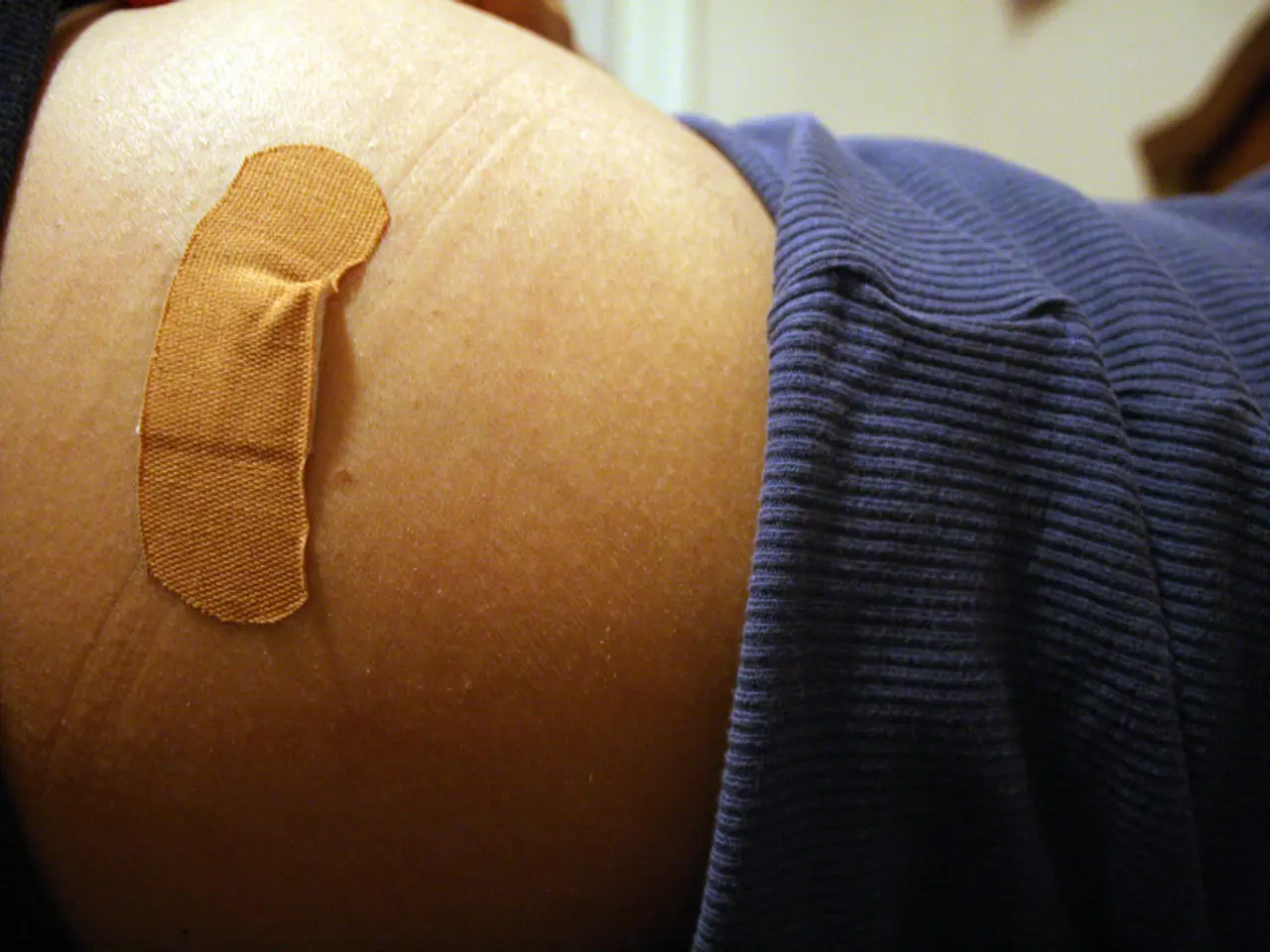Alert: Recognizing Indications, Reactions, and Actions to Take
Medical shock is a critical condition that occurs when the circulatory system fails to supply enough blood, oxygen, and nutrients to the body's tissues, potentially leading to cellular dysfunction and organ failure. This condition can be caused by various factors, and it is essential to understand the different types, symptoms, and treatments associated with medical shock.
There are four primary types of medical shock:
1. **Hypovolemic Shock** - Caused by significant loss of blood or fluids, such as severe hemorrhage, dehydration, or burns, leading to reduced blood volume. People with hypovolemic shock may need a blood transfusion and IV fluids to help restore proper blood flow.
2. **Cardiogenic Shock** - Occurs when the heart is unable to pump blood effectively, often due to a heart attack or severe cardiac conditions. Treatment may involve improving heart function with medications or mechanical support.
3. **Obstructive Shock** - Caused by physical obstruction of blood flow in the heart or major vessels, such as pulmonary embolism or cardiac tamponade. Treatment focuses on removing the obstruction to restore blood flow.
4. **Distributive Shock** - Caused by abnormal distribution of blood flow due to widespread vasodilation or vascular permeability changes. Includes neurogenic shock (due to spinal cord injury), anaphylactic shock (severe allergic reaction), and septic shock (overwhelming infection). Treatment may involve immediate administration of epinephrine, hospital IV epinephrine, antihistamines, glucocorticoids, beta-agonists, and oxygen therapy.
Common symptoms of shock include weak, rapid pulse; low blood pressure; cold, clammy, and sweaty skin; altered mental status (confusion, agitation); rapid breathing; and narrowed pulse pressure. Specific symptoms vary by type, such as skin flushing and airway swelling in anaphylactic shock, or paralysis and warm skin in neurogenic shock.
Treatment for medical shock depends on the underlying cause, and rapid, targeted treatment is crucial for survival and recovery. Supportive care includes airway protection, oxygenation, fluid management, and monitoring of vital signs.
Some people may need rehabilitation after recovering from shock, and talking to a doctor about these effects can help during recovery. It is essential to seek immediate medical attention if experiencing symptoms of shock, as shock often requires emergency medical treatment to prevent organ damage or death.
In summary, understanding the types, symptoms, and treatments of medical shock is crucial for recognizing and addressing this critical condition promptly. Recognizing the type of shock and initiating rapid, targeted treatment is crucial for survival and recovery. Each type demands specific interventions focused on correcting the underlying cause and supporting circulation and oxygen delivery.
- Medical-conditions such as hypovolemic shock, cardiogenic shock, obstructive shock, and distributive shock require immediate attention to prevent organ damage or death.
- Hypovolemic shock, caused by significant loss of blood or fluids, can lead to reduced blood volume and may necessitate blood transfusions and IV fluids.
- Cardiogenic shock, often due to a heart attack or severe cardiac conditions, requires improving heart function with medications or mechanical support.
- Obstructive shock, caused by physical obstruction of blood flow in the heart or major vessels, necessitates removing the obstruction to restore blood flow.
- Distributive shock, characterized by abnormal distribution of blood flow, includes neurogenic shock, anaphylactic shock, and septic shock, requiring immediate administration of treatments like epinephrine, antihistamines, glucocorticoids, beta-agonists, and oxygen therapy.
- Common symptoms of shock include weak, rapid pulse; low blood pressure; cold, clammy, and sweaty skin; altered mental status (confusion, agitation); rapid breathing; and narrowed pulse pressure.
- Specific symptoms vary by type, such as skin flushing and airway swelling in anaphylactic shock or paralysis and warm skin in neurogenic shock.
- Treatment for medical shock depends on the underlying cause and may involve supportive care like airway protection, oxygenation, fluid management, and monitoring of vital signs.
- Recovering from shock may require rehabilitation, and talking to a doctor about the effects can help during recovery.
- Chronic-diseases like diabetes, eczema, bipolar, depression, multiple sclerosis, migraine, autoimmune-disorders, rheumatoid-arthritis, neurological-disorders, and Alzheimer's disease can put individuals at a higher risk of developing medical shock.
- Chronic-kidney-disease, respiratory-conditions like COPD, and digestive-health issues may also increase the risk of experiencing shock.
- Breast-cancer treatments can potentially lead to reduced blood volume, increasing the risk of hypovolemic shock.
- Addressing and managing chronic-diseases and maintaining health-and-wellness through fitness-and-exercise, eye-health, hearing, and skin-conditions care can help reduce the risk of medical shock.
- Predictive science plays a significant role in understanding the factors leading to medical shock and developing preventive measures and treatments.
- Cancer, a devastating chronic-disease, is one of the leading causes of death worldwide and requires continuous research and development in science.
- Type-2-diabetes and cardiovascular-health are closely related, as poor blood sugar control can increase the risk of heart disease and stroke.
- Mental-health conditions like depression and anxiety can complicate the management of medical-conditions like chronic-diseases and chronic-kidney-disease, making it essential to address both physical and mental health issues for comprehensive care.




